A small alpine lake in the Wind River Mountains of Wyoming, August 8, 1985.
In the morning, I walked over to the lake from my tent and reached down to fill an aluminum pot up with water for tea. I saw a small, pale shape moving through the water. No, not one, there were a few. I had never seen anything like them. They definitely weren’t fish. They were about the size of tadpoles and had long tails but the tails didn’t wiggle back and forth, they remained straight. There were no vigorous motions at all. Instead, the animals glided gracefully through the water with no obvious means of propulsion. With delicate, translucent bodies, they seemed harmless enough. I stretched a finger toward one. It turned and slid serenely away. What are they and why didn’t I have the slightest idea of what they are?
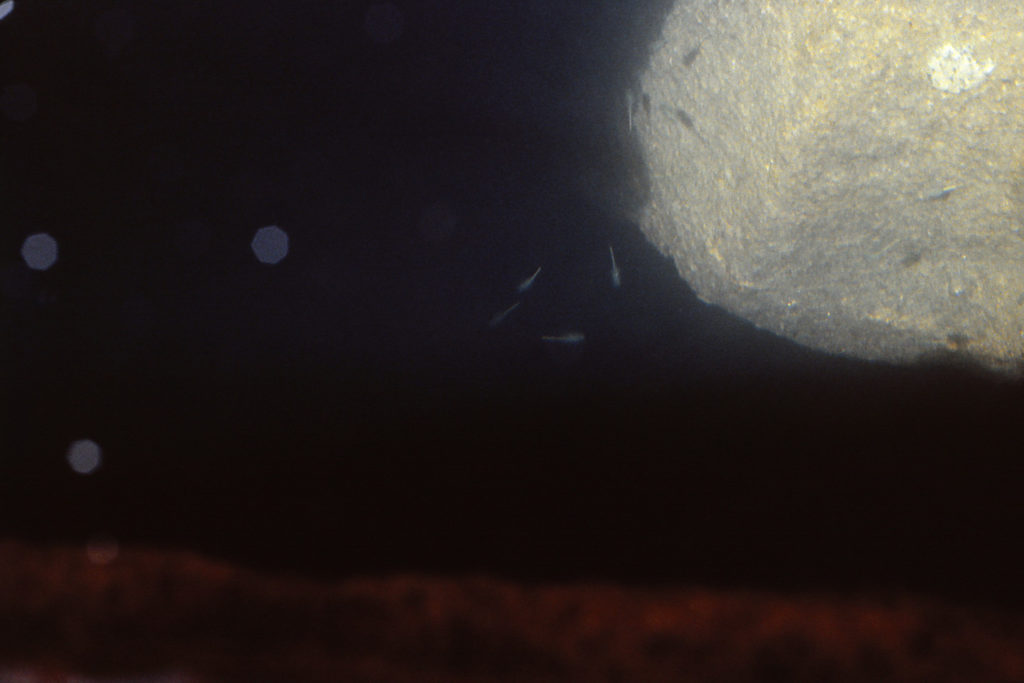
What the heck are those ghostly things?
I had been hiking in the Wind River Mountains before but this wasn’t recreation. A summer job with the Lander Ranger District of the Shoshone National Forest had brought me to this lake. It wasn’t a career but it would keep me alive for a few months amid the layoffs and mass exodus from Wyoming during the oil bust.
There was concern that acid rain caused by air pollution in southern California, the Salt Lake City area, or the oil and gas fields of southwestern Wyoming, which are all up-wind of the Wind River Mountains, would cause the alpine lakes to turn acid. The rock of the Wind River Mountains is mostly granitic plutons and gneisses composed primarily of quartz and feldspar minerals. These minerals resist dissolution by rain water so the lakes have very limited capacity to buffer acid due to carbon dioxide, sulfate, and nitrate in precipitation. The Bridger-Teton National Forest had begun studying the lakes in the Bridger Wilderness on the west side of the divide and now the Shoshone National Forest was starting a program to study 2 lakes on the east side of the divide in the Popo Agie and Fitzpatrick Wildernesses.
My job was to collect water, plankton, and inlet/outlet macroinvertebrate samples periodically from each lake until freeze-up and to do some lab work such as measuring alkalinity. The water samples had to be packed in a cooler with snow or ice-paks, carried out, and mailed to a laboratory soon after collection. On most trips, I had help carrying gear and samples. Although I hadn’t done this kind of work before, working in the mountains was appealing in spite of the low pay. Luckily, living in Lander at that time was relatively cheap.
This wasn’t my first trip to the lake with the fairy shrimp. On the first trip, the Forest Service had hired an outfitter and a couple of horses to haul in the raft and sampling equipment. There wasn’t a trail to the lake to be sampled and the outfitter made it only as far as this lake. My tent fell off a horse somewhere along the route and although I retraced the route that evening, I didn’t find it. The lake where I ended up is less exposed to the wind and a clump of krummholz nearby offered some protection so I decided to camp there. I used my poncho as both tent and ground cloth and named the lake Bivouac Lake. The Wyoming Game and Fish Department’s (WGF) online map that shows what fishes are in which lakes gives Bivouac Lake the label Icicle Lake.

Looking down on Bivouac Lake from a melting snowbank. The greenish-brown, shrub-like vegetation to the left of the lake is stunted krummholz close to its elevation limit.
The lake I sampled has been given the informal name Lower Saddlebag Lake by the WGF. It is in the southern part of the Wind River Mountains in Atlantic Canyon at an elevation of about 3,440 m (11,285 ft). Since I used the lab at the WGF office in Lander to do my alkalinity measurements, I learned from the guys there that Lower Saddlebag had been stocked with fish many years ago but the fish didn’t survive. Upper Saddlebag Lake is next to Lower Saddlebag Lake and the 2 together look sort of like a pair of saddlebags.
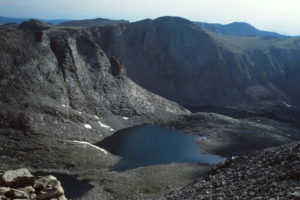
Lower Saddlebag lake, looking northwest with tip of Upper Saddlebag Lake at lower left. The outlet drains into Bivouac Lake, which is down the hill to the right off the edge of the photograph. Ham Lake (WGF name) is at the base of the cliff on the far side of the canyon.
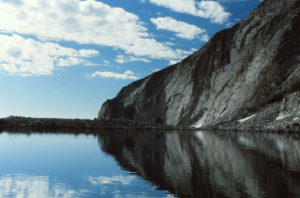
While juggling paddles, sampling equipment, and bottles, I occasionally had time to look up. What a view. Looking south toward the northeast face of Atlantic Peak on a mercifully calm morning on Lower Saddlebag Lake.
I didn’t know where to start to find out what the animals in Bivouac Lake are. I told my boss, Skip Shoutis, who is quite familiar with the Winds. It just so happened that his brother, Arthur Shoutis, was a biologist at the Central Wyoming College field station outside Lander. It took a while to find a break from my hectic Forest Service schedule but I finally got away to talk to Arthur. My description of the animals was rather incoherent. The nearest thing I could think of was tadpoles but they obviously weren’t much like tadpoles. Nonetheless, Arthur figured out that I was probably describing fairy shrimp: freshwater, shell-less, slow-swimming crustaceans of the order Anostraca. He loaned me a book and some articles to read. Arthur mentioned that he had previously corresponded with a biologist who specialized in fairy shrimp, Denton Belk, and suggested I send him specimens for identification.
I hadn’t taken any biology courses at a university but I had enjoyed biology classes in high school. After the Forest Service job ended, it took a couple of months before I was hired for another job. I took some time to visit the libraries at Central Wyoming College in Riverton and at University of Wyoming in Laramie and began digging into the limnology (biology of lakes) literature. The more I read about fairy shrimp, the more interesting they became. They were unlike any animals I had ever heard, or read, of.
The job I had found in Lander ended abruptly soon after the state subsidy for on-the-job training ended. As summer 1986 started, I was getting ready to apply for a janitor position at Central Wyoming College when I read in the Riverton Ranger that the college had received over 100 applications for the position. Back to the grind of searching for job openings and mailing out resumes. No point waiting in town for the reject letters so I hiked back up to Bivouac Lake during the first week in September to view the fairy shrimp and try to catch them on film. The weather was great but trying to focus the camera manually on the ever-swimming fairy shrimp in the relatively deep water of Bivouac Lake proved to be a challenge. I also collected some specimens to send to Denton Belk. I managed to catch them with a punctured 2-pound yogurt container. It wasn’t too hard. Killing them with alcohol was grotesque as they convulsed violently but I justified it by telling myself I was doing it for science. I visited some other lakes and ponds on the hike back but didn’t find any more fairy shrimp.
During the winter, I made a little money as a day laborer shoveling snow but was otherwise unsuccessful in my job hunting. I tried to maintain my sanity by cross-country skiing in the mountains west of Lander and identifying places I could go to look for fairy shrimp. I mailed the preserved Bivouac Lake fairy shrimp to Belk in February and got a reply within a week. That was very encouraging.
Come April, I needed to get out of town. A trip to Clark’s Fork Canyon north of Cody was a potent antidote to the job-hunt blues. The topography was stunning and the wildlife beyond belief: deer, elk, bighorn sheep, mountain goats. They were all there, just lounging around chewing on the green shoots of spring.
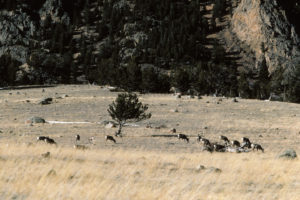
Why look for work when you can find wildlife?
Nearer Lander, I decided to go looking for sage grouse leks. Back then, the BLM was still burning sagebrush to improve range conditions for cattle. Sage grouse were just a curiosity: big, rather dim-witted birds that flew low and slow. They might or might not get out of the way of an approaching vehicle. The biologists in the Lander office were more than happy to tell you where the leks are. At one lek, I got up to 70 before I gave up counting.
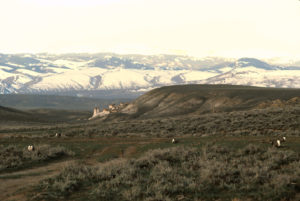
This beats getting up to go to work, even at 0430.
Great news at the end of April: I received a job contract to sign. It wasn’t in Wyoming and it didn’t start until September but I might have just enough cash to last until the paycheck. If not, I wouldn’t have a place to live for the first month. That was before credit cards.
What to do? In mid-May, I went looking for another lek. I didn’t see any sage grouse but after the sun rose, I was surprised to see a large lake out in the middle of the sagebrush. By then, I knew fairy shrimp didn’t inhabit only alpine lakes but I was nonetheless skeptical. I found lots of birds at the lake. The water was turbid and sort of scummy. It seemed rather unappealing. But then I saw a few small, pale gray apparitions flitting among the submerged sagebrush stems. No question, those were fairy shrimp. It was a discovery, at least for me.
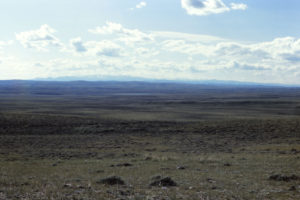
What’s a big lake like that doing out in the middle of the sagebrush? I wonder if it has fairy shrimp.
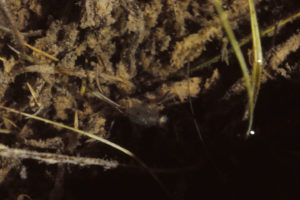
What do you know? There’s one. If they can live in this lake, where else might they be?
I went back to “Coyote Lake” (as named on the Happy Spring 7.5-minute topographic quadrangle I later found out) the next week to collect specimens. Maybe Denton Belk would identify a different species. I checked out several other ponds in the vicinity and most had fairy shrimp. There were other animals in the water. From my reading, I could guess what some of them were. I thought I saw copepods, ostracods, and the remains of a tadpole shrimp. There were a few kinds of beetles and various insect larvae I couldn’t identify. In some cases, the pond water was teeming with life. I also saw salamanders and a frog. It seemed so incongruous – nondescript, temporary ponds with no inlets or outlets, in hollows among sagebrush-covered hills, bursting with life. The incongruity, of course, was due to my bias and previous ignorance of aquatic invertebrates. I couldn’t pass up this opportunity. It was spring. The search was on.
Later in May, I went back to visit Arthur Shoutis and return a book. He suggested we check out Buttress Pond (his name), where he thought he had seen fairy shrimp before. It was not far from the field station and a short hike from the road in Sinks Canyon. We didn’t find any fairy shrimp but we did see lots of amphipods, also known as scuds or side-swimmers. They are small, like fairy shrimp, but have shrimp-like shells and swim more quickly. I also showed Arthur the specimens I had collected from “Coyote Lake” and ponds in the vicinity. Arthur had a microscope at the field station as part of his job. We got so involved looking at fairy shrimp under the microscope that Arthur was almost late to his birthday party. When I went back to use Arthur’s microscope in July, I gave him a few of the specimens I had collected so he would have some for reference in case anybody else asked him about fairy shrimp.
So why didn’t Arthur and I find fairy shrimp in Buttress Pond?
They don’t hatch every year.
Oh.
Or, it may be too late in the season and predators have eaten them.
Oh.
But then, I’m not absolutely sure that what I saw before were fairy shrimp. I just saw them in passing.
Oh. This sounds challenging.
My thanks to Arthur for showing me the door to a vast world of freshwater zoology that was completely new to me. My fairy shrimp journey had started as the lives of all fairy shrimp start – by chance.
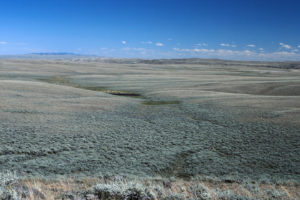
What are the chances?
For what followed, see With Help from Denton Belk